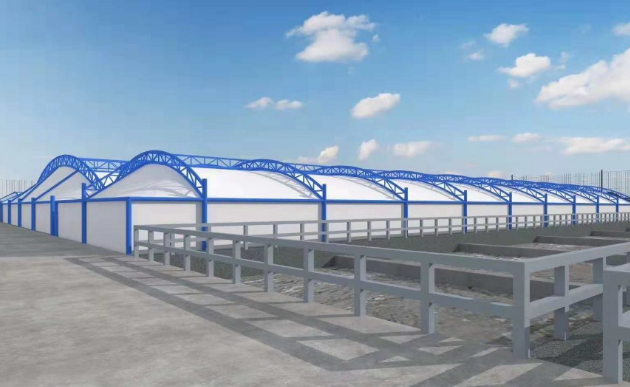There are many kinds of sewage tank sealing materials, most of which are hard materials. The environmental membrane materials are different from those traditional membrane materials. Why do you choose environmental membrane materials as the sealing material for sewage tank sealing?
There are many kinds of sewage tank sealing materials, most of which are hard materials. The environmental membrane materials are different from those traditional membrane materials. Why do you choose environmental membrane materials as the sealing material for sewage tank sealing?

1. Acid and alkali corrosion resistance
At present, common waste odor gases in sewage ponds on the market are ammonia, hydrogen sulfide and some sulfides, which are extremely corrosive. If you want the sewage tank sealing cover to be used for a long time, you must choose a material that can resist the corrosion of the above substances. Environmental membrane material is just such a material resistant to acid and alkali corrosion, which can be used for 15 years.
2. Good weather resistance
In addition to corrosion resistance, the covering material of the sewage tank also needs to have a certain degree of weather resistance to avoid the structure's service life from being too short due to the aging of the covering material. The environmental film material adopts UV light curing treatment to effectively resist ultraviolet damage.
3. Strong resistance
Standing outdoors as a sewage tank sealing cover, it has to experience various possible typhoons, heavy rains, snowstorms and other severe weather, and it requires a certain degree of resistance. Otherwise, the air collecting hood that breaks by blowing has no meaning to seal. Although the membrane material is soft, it is good at borrowing force and hangs on the steel structure. The overall structure strength is the same as that of steel bars, and it can withstand strong winds of level 12.
4. Low maintenance cost
Because the surface material of the environmental membrane is plastic, it has good self-cleaning properties and usually does not require much maintenance.
The inflatable membrane sports hall has a certain sound insulation effect, and its sound insulation performance can be further improved through design optimization.
Winter is here, and everyone wants to find a warm and comfortable place to exercise, right? The membrane sports arena is definitely a good choice!
In today's society where environmental protection is increasingly becoming a focus of attention, which company is good for covering sewage tanks with anti lifting membranes? How to choose a trustworthy partner among the many companies that provide sewage tank anti lifting membrane covering services? The following points provided by the Zhanji editor may be helpful for your decision-making.
When we use exhaust gas treatment equipment, we often overlook the maintenance and upkeep of the equipment.
Shanghai Zhanji Fabric Structure Co., Ltd. is a professional membrane structure vendor who has an expert engineering design and construction team, and are at the leading position in this membrane field all over China.